Balcony for dreamers. There is no floor: abandon gravitation ye who step out here. Turned so entirely outward that it got refined out of existence, there not to detain but to accelerate the gaze. The wrought iron railing as an exercise in minimalism in this least minimalist of cities: how to draw the minimal line that can hold the maximum of time.
For 400-500 years the balcony has been working on mastering the art of flight. In the meantime the palace has grown wrinkled and bald and liver-spotted. The thinner and more brittle its walls, the more it fills up with swallow-sky. Swallow-sky is no ordinary sky, and is entirely different from seagull-sky, not to mention pigeon-skies. However, it does show some similarity to bat-sky, although the latter is a night sky of course. The sky graffitied over by the gulls’ trajectory is broad-gestured, self-confident action painting, while the swallow-sky is made up of the spent pixels of untraceably swift, self-effacing movements. Its negative is the airway system of deep blue light.
The swallow-sky is the best introduction into the nature of chaosmos.
O rondine che arrondini lu mare. The way of being of sea swallows is to fly round the sea, round mini-seas that fit into the ellipses drawn by their frenzied hither-and-thithering. There is demented purposefulness in their movement as they whirl in flights, but each swallow’s trajectory is lonesome. It is the sea-sky they are after, not mosquitoes.
One could draw the city map like a puzzle of roof terraces. Like a Klee, but much more jumbled. It is impossible to make an accurate aerial image of the old town because satellites cannot distinguish between roof terraces on one or two levels, or those with a tile or tin roof or one grown over with greenery, and a regular rooftop. Only the swallows know the city’s true map: imagining the morphology of the houses on the basis of their ground plans is as impossible as it is to represent a forest by drawing the circumference of tree trunks. Only the swallows and the cats. A cat can roam the roofs of entire districts, the Cassaro, the Kalsa, only the main thoroughfares block its way with their violent straight lines: the Via Maqueda, the Via Roma, the Corso Vittorio Emmanuele. It is not impossible that Palermo cats have learnt to fly, with a discreet flutter like bats. They probably drink not milk but coffee that careful hands place in their way beside the de rigueur canned tuna, at dawn parachute on top of the most trustworthy-looking parked car, tiny electric sparks at the tips of their moustache. The young ones sometimes fall to their death on the broken tarmac that feels like sea pebbles to the feet, like young birds dropped from the nest. Like that ginger kitten thrown by the curbside on my third day here, almost completely buried in litter and dust by evening.
The inhabitants seem to be practicing levitation day and night. Women walk on dizzyingly tall platforms. It is easy to spot tourists in the thick crowds: they are the only ones who fix their eyes on the sidewalk. The locals’ gaze is dispersed at eye level, yet they seem to have feelers for rugged curbstones. The palaces turn their faces to the sky like the martyrs of the darkened baroque altarpieces; what you see from the narrow vicoli, the upwards-broadening piazzette and claustrophobic street corners is mostly their loose double chin. Towers stretch upwards until they glimpse the sea. The domes only exhibit themselves to the top floors, they rotate with their maiolica skirt swollen out round. The sky above them is the sea’s reflection. Looked down upon, the shamefaced sidewalks keep to the walls, try to elevate themselves with obsessive tectonic uplift under the belly of parked cars that take up most of their surface.
As the sidewalks keep vanishing, so do the parked cars adhere to the walls like the mollusks, plastic bottles and rags washed ashore on the breakwater rocks. The little, disused chapel at the entry of my street has an A4 sheet of paper between two brutal steel padlocks pleading with drivers to leave the entrance open at all hours. One and a half cars and two motorbikes are squeezed in front of it.
In place of the thinning tarmac, trash sediments: in the city of dreamers nobody bothers to clean up. Above the trash bins overflowing with pungent stench of rot and urine a slightly squinting Madonna leans out, two subdued Christmas lights stuck into her garish mantle. Below in thick white letters, IN TRASH WE TRUST. The Il Capo bazaar shops, the street-food carts of the Vucciria, the baroque-oriental fish, meat, vegetable, fruit stands of the Ballarò all spill over onto the streets, blocking the distraught motorini with the clients’ shopping bags, the leaves and peels and offal and the liquid stench dripping from the fish stands (the sea creatures are sprinkled with icy water, generous quantities of which end up on the customers’ clothes).
There is a difference of at least fifteen shades between the cornices dipped in the morning and evening light, and the base of the same walls. And of at least fifteen shades between the zones of sky immediately above the most light-filled cornices and the blue in the middle of the sky. Era il ciel un arco azzurro di fulgor. The blue diluted in the middle of the sky is Sahara blue, like the lapis lazuli mantle of Antonello da Messina’s Virgin Annunciate turning her eyes away from the spectator who is offered a privileged position as the bearer of the crushing word. There is no position more voyeur-like, yet Mary withholds herself from the gaze. The Messina-born Antonello, who had learnt to paint in the Flemish way, invented the theatre of the invisible.
The small Byzantine domes squatting on top of their box-like churches are champagne bottlenecks. Each one encloses the explosion of desert skies: the foam petrified into mosaic tiles a thousand years ago, but keeps fizzling still, ready to pop its stone cork any time.
Inhabitants resist the sea while they can. The old town turns its back to it, the pretentious twin elevations of the Porta Felice flanking the Corso Vittorio Emmanuele’s sea end cannot fool anyone: where the street goes over this threshold into the open, traffic stops spilling, only a few people drift over, but inwards the artery is clotted with humans and machines moving in honking clusters to the spasmodic rhythm of streetlights. The planks of the benches along the deserted seawall are practicing disappearance, just like the balconies’ marble floors. Legions of teens elbow their way on to bus 806 (blue, of course) to Mondello beach, armed with radios that keep screaming even an hour later when they are kneeing their way in the sand among sunbathers’ towels, in earnest competition with the thundering disco music off the bars and fried calamari, ice cream, cotton candy, fruit and coffee stands. A guy carries a roaring oversize loudspeaker on motorbike towards the rocky edge of the crescent-shaped beach, while Arabian-sounding Sicilian songs, syrupy pop and merciless techno crash into the traffic jam from pulled-down car windows, covering the convulsions of the engines. As if existence had to be proved in front of the sea’s vast emptiness. In the city only the refugees and the recently immigrated are quiet. On Piazza Pretoria, which is almost completely filled by the late-Renaissance fountain populated with marble nudes, there is a compact slab of 50-100 demonstrators, mostly Africans, in front of the regional parliament. One man is sitting on the ground with two handwritten banners propped up against the fountain’s edge: DIRITTO AL LAVORO – DIRITTO ALLA VITA. An eerily soft-spoken demand. Their silence is as out of place as the fountain itself, originally designed for the garden of a Florentine villa: the statues’ classical mold looks almost cheap here.
The island and the city on its edge look at their own countenance in the sky and gather shells. Before the Normans they had already gathered a dozen peoples, including Arabians. The Normans took it away from the Arabians, but learnt their language beside Greek, Latin and Hebrew. Their words, gestures, bodies, singing voices got mixed and the city started speaking islandese. Those who speak islandese change their timbre with every sentence. The French and Spanish also landed here with the ambition to rule over it, not recognizing its mirage-like nature. The Greeks and Albanians fleeing from peril all round didn’t attempt to rebuild their lives from scrap but abandoned themselves to this place that never made up its mind which continent to belong to. The rough edges of their names, the Arab gutturals, Latinate consonants, lisping Greek endings were smoothed down like pebbles in the throaty local vowel strings. In the small blind street I stay in and which bears the respectable name Via Bologna, although it has as little in common with the full-bodied leftist university city as its neighbour with Trieste consumed by two-worlds schizophrenia, there is a street tap. In the mornings and evenings people from neighbouring streets come to fetch water. The water they spill while filling their plastic tanks is the only washing the street gets. In this district there are lots of gutted-out houses, semi-demi-ruins with no sewage, this is what the poorest newcomers get. Some of the more consolidated balconies with mass-produced marble slab floors hold massive amphorae or watertanks. The recently arrived sit on the benches of the strangled little park in front of the train station all day long, waiting for connections. Those who are new to the job of waiting are startled by every noise and gesture, at once try to establish and to avoid eye contact. Further up the street in the evenings I can hear five or six languages, of which I only understand Italian and Romanian. Yet all the intonations sound familiar after a few days. Balconies almost rub shoulders, even with the blinds down we can see into each other’s bedrooms. Smells cross over from the kitchens and musics from the TV sets: besides fried calamari and caponata there is thyme, incense and unknown spices that knock me on the head like the scent of jacaranda trees on the streets. When a jacaranda tree blooms, it transubstantiates into scent, the sidewalk beneath is dressed as if for a wedding. Because they can see right into each other’s homes, people stop locking their doors. The ground floor entrances are wide open in the evenings, some sit out to chat with the neighbours, others fool around with a ball trying to amuse children. When dark falls two or three cats queue up for their dinner. From my second day here, I and the two little old ladies who plant themselves in front of the house greet one another. Pingg, go their smiles to my too-loud Buona sera, as I apologetically try to hide the camera with one hand. The street is like a vertical village.
In the mornings a feral tabby eyes me up and down from beneath a parked car. Several people feed it, as they do most strays. Here each square is fitted out with its resident stray dogs, plump and large-size, that lie flat on their sides, not moving an eyelash in the craziest jamboree even. Their eyelids only stir when they dream. They dream often, and then they smile more. They look on the bat-like and invariably anxious-looking miniature dogs walked on leashes with the placid benevolence of aunties. People are genuinely and spontaneously kind to all sorts of stray animals and stray people. On the island even plants are immigrants: tropical jacaranda trees line the posh alleys and the decidedly non-posh thoroughfares that go straight landward for kilometers on end to the margin of the edge of town, and in a place of honour in the lush parks there is always a giant magnolia-fig tree, Ficus macrophylla columnaris, that drives aerial roots into the soil, veritable pillars that grow reptile-like feet, so the exponentially spreading parallel trunks grow to thirty times the width of the mother tree. One tree is a whole forest.
Last morning as I pull my suitcase along the street I glimpse the tabby in the middle of the street. Some car or motorino flattened it in a beastly manner. Before reaching the corner of Via Roma I stop for a moment at the bougainvillea spilling over the broken fence, this commonplace explosion. I can’t help thinking that the cat ended not run over but falling from the rooftop because it was blinded in its flight by the morning splendor.
—Erika Mihálycsa
Erika Mihálycsa is a lecturer in 20th-century British literature at Babes-Bolyai University Cluj, Romania, a Joyce and Beckett scholar. She has translated works by Beckett, Flann O’Brien, Patrick McCabe, william carlos williams, Anne Carson, Julian Barnes and others into Hungarian. Her translations of contemporary Hungarian prose and poetry have appeared to date, or are forthcoming, in World Literature Today, The Missing Slate, Trafika Europe, and B O D Y Magazine. A regular collaborator of various Hungarian reviews, she is editor, together with Rainer J. Hanshe, of Hyperion, issued by Contra Mundum Press.
x
x
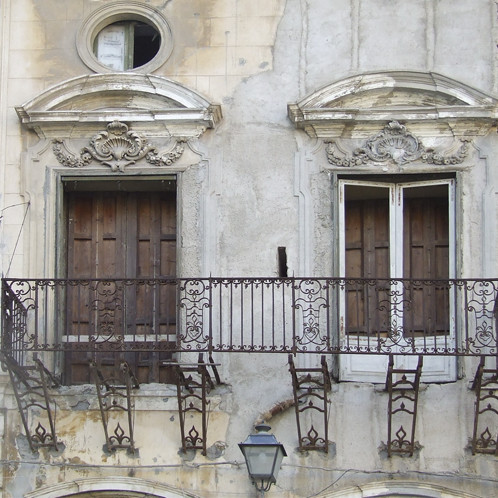
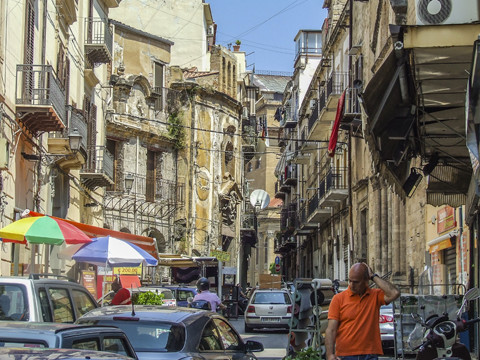
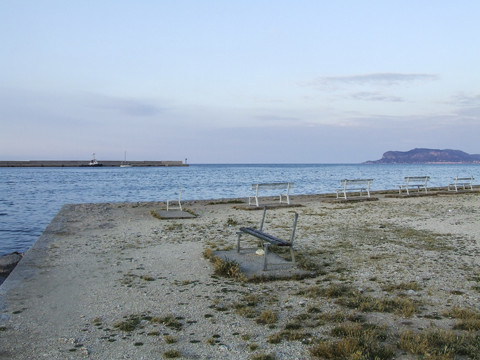
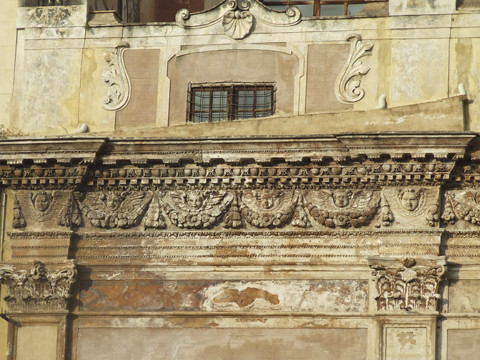

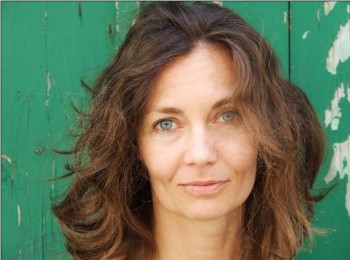
A lovely dreamy evocation of a strange city…
Veramente bello. Thank you for all the wonderful images.